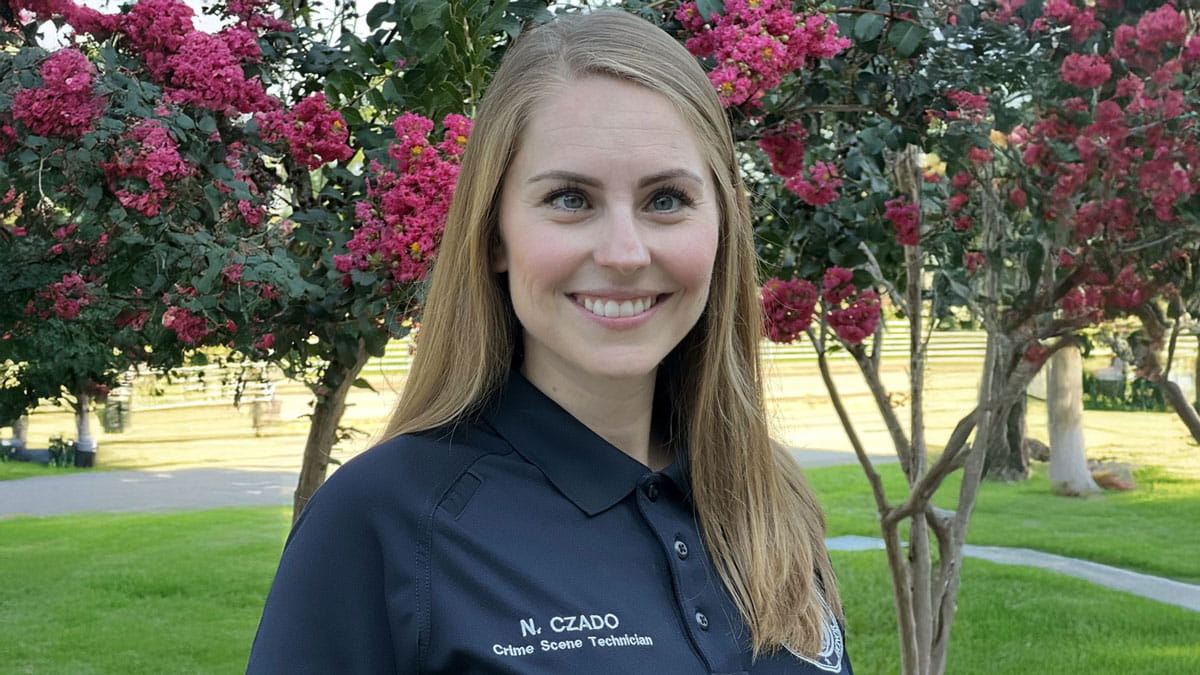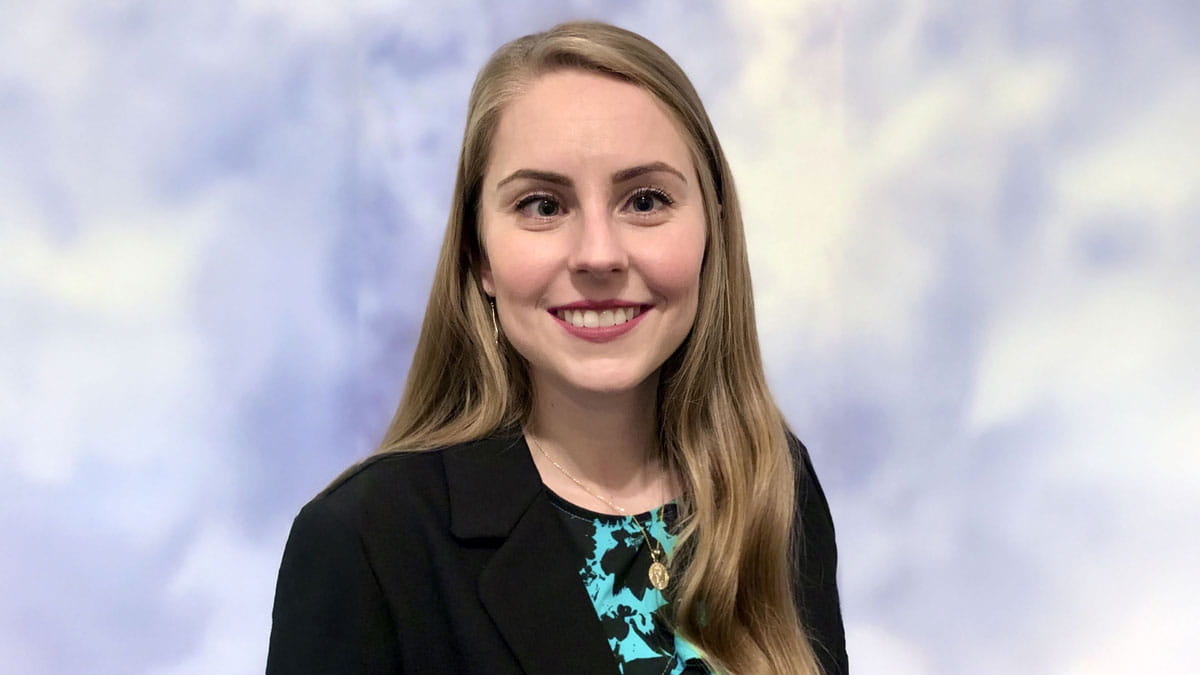
I am proud to say that I am a first-generation American born to Polish immigrants. Although neither of my parents has a scientific background, they always encouraged me to pursue my interest in science from an early age. I completed Bachelor's degrees in Biological Sciences and Criminology at North Carolina State University in 2013 and earned a Master of Science in Forensic Science degree in 2015 from Sam Houston State University (SHSU). After graduating, I pursued a career as a Lecturer in Forensic Science at Fayetteville State University from 2015–2020. During my time at FSU, I supervised student research and served as the Faculty Advisor for the Forensic Science Club. Although I enjoyed teaching, during the spring of 2020, I decided to return to SHSU to pursue a doctoral degree.
During my time at SHSU, I have been able to work with knowledgeable faculty who served as great mentors. As a Master’s student, I began focusing my interest on forensic biology. I was fortunate to be able to work with real-life samples provided by the willed-donor facility at SHSU. Initially, my research began with evaluating different genotyping methods to improve the DNA analysis of formaldehyde-damaged tissues. Over the years, my research expanded to include other types of challenging samples, including touch DNA samples. My collaborations with QIAGEN have further expanded my research to include degraded bone samples and the use of different sequencing chemistries
1. Tell us about your background and how you became interested in forensic science?
Growing up I was always interested in murder mysteries. I liked to investigate anything I considered a mystery, no matter how small. I enjoyed reading Sherlock Holmes and Nancy Drew novels. I always knew that when I grew up, I wanted to be part of investigations in some capacity. I was also interested in science growing up. It wasn’t until college that I developed a true understanding of what forensic science is. By taking courses in anthropology, biology and chemistry, I realized that I could use my interest in science to aid investigations. I am still navigating the balance between my interest in forensic biology and my desire to be more hands-on in investigations as a CSI. I think my experience in both areas complement one another and make me a better forensic scientist overall.
2. Can you provide a summary of the project you are working on?
A project I recently collaborated on involved evaluating thermally degraded bone and enzymatically degraded buccal cell samples to determine their suitability for next-generation sequencing versus a traditional STR workflow. The quantity of DNA recovered after extraction and the levels of degradation were compared to the average number of concordant alleles typed using both Investigator 24plex QS Kit and ForenSeq MainstAY Kit. The project aimed to determine a decision-point analysts could use to determine optimal workflow. Given that ForenSeq MainstAY Kit includes Y-STRs as well as autosomal STRs and can overcome some of the size-based limitations degraded samples would encounter using traditional PCR kits, we hypothesized that with higher levels of degradation, MainstAY would demonstrate improved allele recovery.
3. Please describe your typical day in the lab.
My day in the lab can look very different depending on the stage of the DNA workflow I am currently on. Sample selection usually begins outside of lab and can include having to procure samples from the willed donor facility. If I am working with bone samples, I know I will need to dedicate at least two to three days to get the bone down to usable powder. It is the sample preparation stage that usually takes the longest and requires the most hands-on time. Once I get to the DNA extraction stage, I begin using automated platforms to perform much of the work. Before beginning any work on the instruments, I ensure that maintenance has been completed and no issues exist. We have to stagger the workflow given the large number of samples we run for any given project. This requires great time management and organizational skills.
4. What do you find most interesting about your project? Have you seen any surprising results?
Using an alternative DNA extraction protocol has been the most interesting aspect of the project. Bone samples are traditionally difficult and time consuming to work with. Previously, I extracted DNA from bone manually. I was impressed at how well the extraction could be partially performed on an automated platform (EZ2 Connect Fx using the Bone Extra Large-Volume Protocol). [Read the Application Note – Streamlining degraded sample processing in forensic laboratories: Developing a decision tree for capillary electrophoresis and next-generation sequencing platforms – for more information.]
Although I anticipated seeing greater degradation and lower quantities of DNA recovered as the thermal degradation of bone increased, I was not expecting that the predictive value of the degradation index would be weak. I was also not expecting that the degradation values would not show a consistent pattern for enzymatically degraded samples as they did for thermally degraded samples.
5. What are the benefits of your project to human identification casework?
a. What method do the outputs from this project replace?
The project will hopefully help usher in the application of more sensitive and robust methods for DNA extraction and identification. Our results could encourage other laboratories and practitioners to adopt a more automated approach to bone extractions. Furthermore, my research demonstrates the usefulness of using DNA sequencing for challenging samples, as sequencing recovers more genetic information than size-based STR typing.
b. What types of cases is this work intended for?
Most of my research is intended to be applied to missing persons or unidentified human remains (UHR) cases. However, it can be applicable to any type of degraded samples.
6. What are the major challenges faced while working on your project and how do you overcome them?
The project experienced two major challenges at the onset. First, procuring the samples was challenging. Ensuring that we had enough bone powder at different stages of thermal degradation took a lot of planning. We wanted to ensure that we had enough sample to complete the research in triplicate. Second, artificially degrading the samples was not as straightforward as we had initially thought. Through much trial and error, we were finally able to develop a procedure to create a degradation series for the buccal cells using different concentrations of DNase.
7. Which QIAGEN products do you use and what do you like about the products?
Most of the products I use in lab are QIAGEN products. I like using the EZ1&2 DNA Investigator Kit for DNA extraction. The quick protocol speeds up my processing time, and I find that DNA recovery is always consistent. For my traditional STR typing, I use the Investigator 24plex QS Kit. I find that this kit works well even with challenging samples, and the quality markers are useful for troubleshooting any samples that do not yield complete profiles. In addition to the products used for traditional DNA typing, I also use several QIAGEN sequencing kits. For previous projects, I have used the ForenSeq DNA Signature Prep Kit. ForenSeq DNA Signature Prep Kit can combine STR data with not only SNP typing, but also phenotypic data. In my current projects, I have used the ForenSeq MainstAY Kit and ForenSeq Kintelligence Kit. I like how much more genetic information I can glean from my research samples using these kits as compared to traditional STR kits.
The biggest reason I like using QIAGEN products is the great customer service and technical support the company provides. Since research never runs smoothly, it was reassuring for me knowing that when any issues arose, I could contact someone who was willing to take the time to assist me. Everyone I reached out to at QIAGEN has been very knowledgeable and willing to assist.
8. Outside of forensic science, what are your hobbies?
When I am not working in lab or on scenes, I like to spend my time traveling and exploring the outdoors with my husband. We have visited over a dozen national parks since 2022 and hope to visit many more in the coming years. I also like to go to local comedy shows and musicals to wind down. Although I am not a huge sports enthusiast, I enjoy watching Formula 1 on the weekends. I also enjoy hosting friends for game nights and dinner parties.


